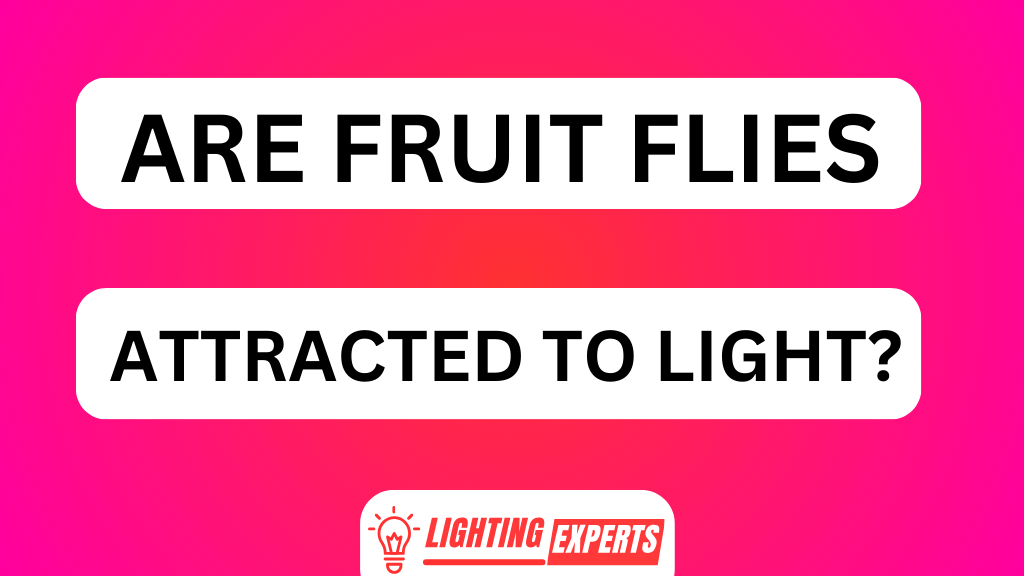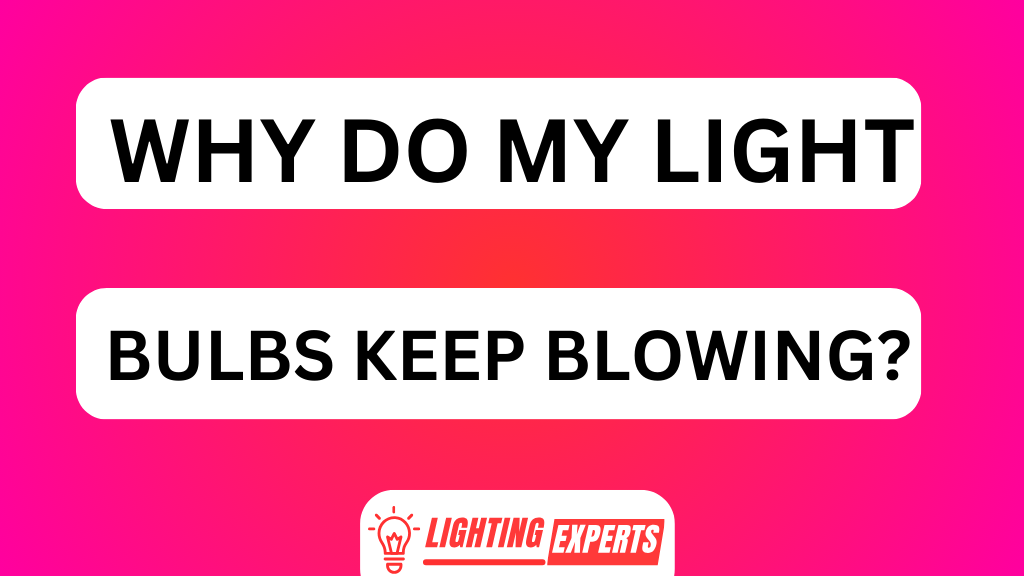Fruit flies, Drosophila melanogaster, have long been the subject of scientific inquiry due to their remarkable adaptability and rapid reproductive cycle. Among their intriguing behaviors is a seemingly inexplicable attraction to light sources, which has prompted extensive investigation in recent years.
This article aims to explore the factors influencing fruit fly response to light, including the role of phototaxis and its relationship with feeding habits. Additionally, we will examine how variations in light intensity affect fruit fly attraction and discuss potential implications for pest control strategies.
Key Takeaways ARE FRUIT FLIES ATTRACTED TO LIGHT
- Fruit flies exhibit phototaxis and are generally attracted to light sources.
- Fruit flies prefer blue or ultraviolet light and are more responsive to shorter wavelengths.
- Light exposure can affect fruit fly feeding patterns, mating behavior, and dispersal.
- Understanding fruit fly attraction to light can lead to more effective pest control methods and alternative pest management strategies.
The Behavior of Fruit Flies in the Presence of Light
The behavior of fruit flies in the presence of light has been extensively studied to understand their attraction or aversion towards it. Fruit flies exhibit a phenomenon known as phototaxis, which refers to their movement in response to light stimuli.
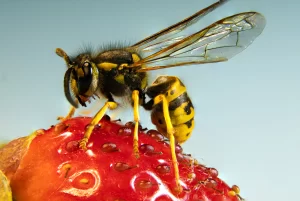
It has been observed that fruit flies generally display positive phototaxis, meaning they are attracted to light sources. This behavior is believed to be mediated by specific mechanisms that involve the integration of visual information with other sensory cues.
Additionally, fruit flies also exhibit a circadian rhythm, which influences their preference for light at different times of the day. Studies have shown that fruit flies are more attracted to light during their active phase when compared to their rest phase.
Further investigations into the underlying neural circuits and molecular pathways involved in these phototactic responses may provide valuable insights into the sensory perception and behavioral patterns of fruit flies.
The Role of Phototaxis in Fruit Fly Attraction to Light
Phototaxis plays a crucial role in the phenomenon of fruit fly attraction to sources emitting brightness. Phototaxis refers to the movement of organisms in response to light stimuli. Fruit flies, specifically Drosophila melanogaster, exhibit positive phototaxis, which means they are attracted to light sources.
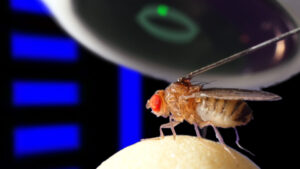
Numerous studies have been conducted to understand the underlying mechanisms and preferences associated with this behavior. Research on phototaxis in fruit flies has revealed that their attraction towards light is influenced by various factors such as intensity, wavelength, and directionality of the light source.
For instance, studies have shown that fruit flies prefer blue or ultraviolet (UV) light over other wavelengths. Additionally, experiments manipulating lighting conditions have demonstrated that fruit flies tend to exhibit stronger responses when exposed to a bright and focused light source compared to diffuse or dim illumination.
Factors That Influence Fruit Fly Response to Light
Factors such as intensity, wavelength, and directionality of the light source have been found to influence the response of fruit flies. These factors affect phototaxis, which is the movement or orientation of organisms in response to light stimuli. The following factors have been identified as important in understanding fruit fly light response:
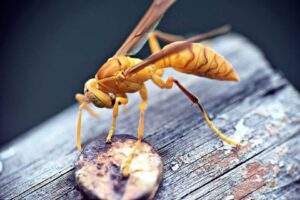
- Intensity:
- Fruit flies are attracted to bright light sources.
- Higher intensity light can cause increased activity and movement towards the source.
- Wavelength:
- Fruit flies are more responsive to shorter wavelengths (blue and ultraviolet) compared to longer wavelengths (red).
- Different wavelengths can elicit different behavioral responses in fruit flies.
Understanding these factors is crucial for comprehending how fruit flies respond to light stimuli. This knowledge sets the stage for investigating the relationship between fruit fly attraction to light and their feeding habits.
The Relationship Between Fruit Fly Attraction to Light and Their Feeding Habits
Understanding the relationship between fruit fly response to light and their feeding habits is important for gaining insight into their behavioral patterns. Fruit fly feeding patterns are influenced by various factors, including light availability. Research has shown that fruit flies exhibit a preference for dark environments, as they tend to aggregate in shaded areas where food sources are abundant.
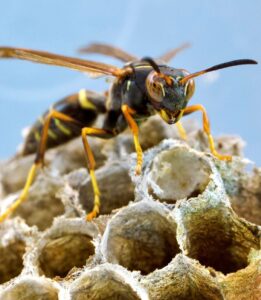
However, when exposed to bright light, fruit flies tend to disperse and search for new feeding sites. This suggests that light plays a role in modulating fruit fly feeding behavior.
Furthermore, studies have also suggested that light exposure can affect fruit fly mating behavior. For instance, male fruit flies have been observed to display increased courtship behaviors under specific lighting conditions.
Overall, understanding how light influences both the feeding and mating habits of fruit flies contributes to our understanding of their complex behavioral repertoire.
How Light Intensity Affects Fruit Fly Attraction
The relationship between light and fruit flies is a topic of interest in the field of entomology. Fruit flies are known to be attracted to brightness, and this has been extensively studied in various experiments.
One key aspect that researchers have investigated is the impact of light intensity on fruit fly attraction. This plays a crucial role in understanding their behavior and developing effective control strategies.
Light and Fruit Flies
Light exposure can influence the behavior of fruit flies. These small insects possess photoreceptors, specialized cells that allow them to detect and respond to light stimuli. When exposed to light, fruit flies exhibit a range of behaviors, including light avoidance behavior. This means that they tend to move away from areas with high light intensity or seek shelter in darker environments. Understanding the mechanisms behind this behavior can provide insights into how fruit flies perceive and interact with their environment.
Key points:
- Fruit fly photoreceptors:
- Photoreceptors are specialized cells that detect and respond to light.
- Fruit flies have photoreceptors that allow them to sense light stimuli.
- Light avoidance behavior:
- Fruit flies exhibit a behavior known as light avoidance.
- They tend to move away from areas with high light intensity.
- They seek shelter in darker environments when exposed to bright lights.
Studying these responses can help unravel the complex relationship between fruit flies and light, shedding light on their sensory abilities and ecological interactions.
Attraction to Brightness
Brightness has been found to elicit specific responses in certain organisms, with behaviors such as avoidance or seeking shelter observed. When it comes to fruit flies, their behavior in response to brightness is particularly interesting. Fruit flies exhibit a phenomenon called phototaxis, which refers to their attraction or aversion to light stimuli. Studies have shown that fruit flies are positively phototactic, meaning they are attracted to bright light sources. This behavior can be observed in various contexts, such as when fruit flies are placed in a brightly lit chamber or when they encounter a source of light during their foraging activities. The exact mechanisms underlying this attraction to brightness in fruit flies are not fully understood and require further investigation. Nonetheless, the observation of phototaxis in fruit fly behavior highlights the complex relationship between brightness and their responses.
| Stimulus | Response |
|---|---|
| Bright Light | Attraction |
| Dim Light | Neutral Response |
| Shadow | Avoidance |
| Darkness | Seeking Shelter |
Impact of Light Intensity
Varying levels of luminosity have been shown to affect the behavior of certain organisms, indicating that light intensity plays a significant role in eliciting specific responses.
When considering the effects of light intensity on insect behavior, several key observations can be made:
- Light intensity impacts circadian rhythms: Insects rely on light cues to regulate their internal clocks, and changes in light intensity can disrupt their normal activity patterns.
- Light intensity influences navigation: Many insects use visual cues for orientation and navigation. High-intensity lights can disorient insects by overwhelming their ability to detect other environmental landmarks.
Understanding how light intensity affects insect behavior is crucial for various fields such as agriculture and pest control. By manipulating the lighting environment, it may be possible to attract or repel specific insect species effectively. This knowledge has important implications for developing innovative strategies to control pests like fruit flies and reduce crop damage.
The Potential Implications of Fruit Fly Attraction to Light in Pest Control Strategies
The investigation into fruit fly attraction to illumination sources could have significant ramifications for the development of more effective pest control methods. Understanding the factors that influence fruit fly behavior towards light can lead to potential applications in designing alternative methods for pest management.
By manipulating light sources, it may be possible to attract or repel fruit flies in targeted areas, effectively reducing their population and minimizing crop damage. This knowledge could be used to develop novel trap designs that exploit fruit flies’ attraction to light, improving the efficacy of pest control strategies.
Additionally, exploring alternative lighting technologies such as LED lights with specific wavelengths may offer more precise control over fruit fly behavior. Such advancements in pest control methods can contribute significantly to sustainable agriculture practices by minimizing the reliance on chemical pesticides and reducing environmental impact.
Frequently Asked Questions
How Long Do Fruit Flies Typically Stay Attracted to Light Sources?
The duration of fruit fly attraction to light sources varies depending on several factors. These factors include the species of fruit fly, environmental conditions, and availability of other attractants. Further research is needed to determine specific durations for different scenarios.
Can Fruit Flies Become Immune to the Effects of Light Attraction Over Time?
Fruit flies may develop a reduced attraction to light due to an immune response or genetic adaptation. Further research is needed to determine the underlying mechanisms and explore the long-term effects of light exposure on fruit fly behavior.
Are There Certain Types of Light Sources That Fruit Flies Are More Attracted To?
Various factors influence fruit flies’ attraction to different types of light sources. These may include the wavelength, intensity, and spectral composition of light emitted by the source. Further research is needed to fully understand these influences.
Do Fruit Flies Show the Same Attraction to Artificial Light Sources as They Do to Natural Light Sources?
The effects of light attraction in fruit flies are investigated in relation to both natural and artificial light sources. Research is conducted to determine if fruit flies exhibit the same level of attraction towards artificial light sources as they do towards natural ones.
Can Fruit Flies Be Trained or Conditioned to Avoid Light Sources Altogether?
Training techniques and genetic factors can influence fruit flies’ response to light sources. By conditioning them to avoid light, it is possible to alter their behavior and reduce their attraction to light stimuli.
Conclusion
In conclusion, fruit flies exhibit a fascinating behavior in the presence of light. Their attraction to light, known as phototaxis, is influenced by various factors such as their feeding habits and the intensity of the light.
Understanding this relationship between fruit fly behavior and light can have significant implications for pest control strategies. By manipulating the intensity of light sources, we may be able to effectively deter fruit flies from infesting our homes and crops.
This scientific knowledge opens up new opportunities for innovative approaches in managing fruit fly populations and minimizing their impact on our lives.
